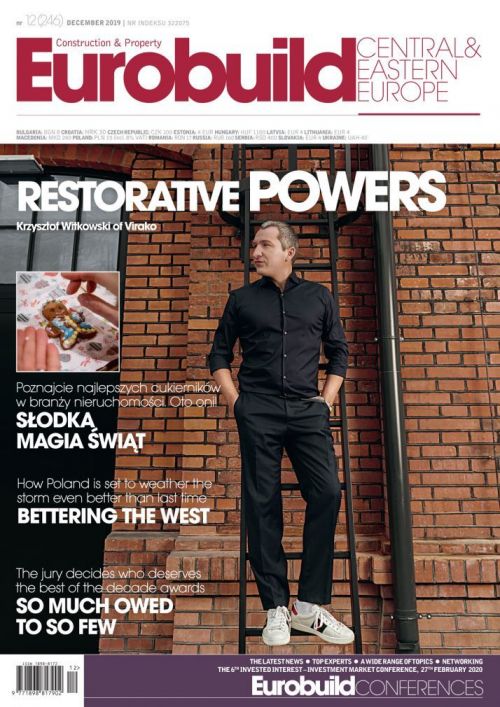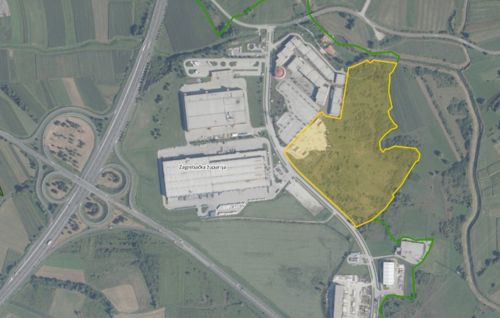Selling up and staying on
Investment & finance
What do fridges and real estate have in common? Well, quite a lot if you listen to WP Carey, one of the pioneers of the sale and leaseback transaction. Before setting out on a successful career in financing Bill Carey, the original founder of the US based financing firm, used to purchase refrigerators. His reasoning was simple. Students need fridges but such a machine represents a large outlay for a box that is not particularly portable once your university career comes to an end, so instead of buying one why not lease? In this way, Bill Carey secured himself an income while at university.
“Later he moved into investment banking and he began to think that this concept of sale-leaseback would work very well in real estate as a way for companies to release the capital they have tied up in their real estate and then more effectively deploy it into their operations so he quit his job and set up W. P. Carey with his first fund in 1973,” explains Arvi Luoma, the managing director and head of European Investments at WP Carey. In the last 46 years the US based company has built up a portfolio of USD 25 bln under management with arounc USD 5 bln invested in Europe “In Central and Eastern Europe we now have approximately EUR 1.3 bln in assets across nine countries. The most recent investment was in Katowice for Rockwell Automation. We’re financing the development of a new Hi Tech facility for them right in the centre of town. A year before we closed a sale-leaseback with a Tier 1 automotive supplier. We also completed a built to suit development for Ontex,” he says referring to a forward funding transaction of app. EUR 14 mln, in which Panattoni built a centre in Radomsko (between Częstochowa and Łódź).
“We now have EUR 1.3 bln in assets across nine CEE countries,” says Arvi Luoma [centre], the head of European Investments and managing director of WP Carey
An easier way to raise capital
According to Jacek Giziński, the co-managing partner of law firm DLA Piper, a sale and leaseback transaction is in theory very simple: “It consists in the sale of the property with the seller simultaneously becoming a tenant under a lease. It is advantageous for the buyer as the property is purchased with an existing tenant and the lease already in place – usually for a long, fixed term. From the seller’s perspective, it allows the release of the money invested in the property, which can then be used for other purposes. It is usually used as an alternative to a long-term bank loan secured by a mortgage, being significantly less formal and with fewer restrictions and covenants imposed on the seller, who is free to use the money from the sale for any purpose,” he explains. DLA Piper recently advised on such an agreement signed by Metro Properties in September worth EUR 250 mln, when FLE purchased eleven stores including Makro Cash & Carry stores in Poland and Hungary and Metro Cash & Carry stores in the Czech Republic. The Polish stores are in Warsaw, Ząbki, Wrocław, Kraków and Lublin, while the stores in Hungary are in Budapest and those in the Czech Republic are in Prague. Colliers International was responsible for brokering the deal in all three countries. This follows a similar sale and leaseback deal announced in July in which six stores were sold in Spain to Savills Investment Management for EUR 73 mln. But according to Dariusz Forysiak, the director of investment services at Colliers International, the two transactions were organised concurrently and some investors were bidding on both contracts at the same time. However, the CEE deal was attractive for a number of reasons: “Many investors wanted to enter the CEE region and for them this is not only Poland but includes, among others, the Czech Republic and Hungary. The portfolio had such a large volume that it was attractive to big institutional investors from Korea, from China, from the US and Canada – and in most cases they wanted to buy the entire portfolio at once. The size of the ticket is what makes the portfolio interesting,” he claims, adding that “investors are looking for long WALTs [Weight Adjusted Lease Terms] and this is a relatively secure investment product compared to everything else on the market. For every international investor, the first thing that they look for is the tenant itself, if it’s strong enough.”
So can you pay your bills?
This is very much a point that is echoed by Arvi Luoma of WP Carey: “Because it’s a long term agreement the credit quality of the tenant is critical to the investment, but the idea that the real estate risk entirely lies with the tenant isn’t quite right. From an operational perspective the tenant operates the property exactly as it did before, but what they don’t need to deal with is residual risk down the line. They don’t need to be concerned whether in twenty years they will need to change location. It gives quite a lot of flexibility to the tenant in the long run,” he says, pointing out that businesses that own their own properties find it harder to move out of premises that they have outgrown. Paweł Nowakowski, the head of capital markets for Cresa Poland, also chimes in by stressing the importance of the strength of the tenants in such deals: “Often with a sale and leaseback transaction, it’s not a typical building and it’s not the case that if the tenant vacates the property you will find another one. So it’s about the financial standing of the tenant and knowing that if he signs a 15–20 year lease he will cover the financial liabilities,” he claims. However, he also pointed out that with such deals it is not so important what sector the tenant comes from. “Sale and leaseback deals are dominated by logistics but are not only limited to it,” he explains, arguing that many such deals could be found in the hotel sector. Such agreements are, on the other hand, rare in the office sector, which Paweł Nowakowski ascribes to office buildings being easier to lease out to a variety of tenants. “Even if an office building has a single tenant you could still find another who could use the property,” he says, adding that “sometimes an investor will expect the tenant to invest in the property to tie the tenant in, but sometimes the tenant will offer a higher rent, knowing that the centre was developed specifically for his needs.” Arvi Luoma of WP Carey also stresses the importance of the property to the tenant. “If you’re going to make a 20–30 year commitment you want to ensure that the real estate is mission critical,” he explains.
Not all plain sailing
The usual structure of a sale and leaseback deal is a long term triple net lease, in which the tenant is responsible for all the maintenance costs of the property, but sometimes the structure has to be adapted to the legal framework of the country. In France tenants cannot be legally made responsible for the roof and structure of a building, so all leaseback agreements there are more commonly double net, i.e. they have no obligation to pay for structural repairs. In Poland there are fewer obstacles to such agreements, but according to Paweł Nowakowski of Cresa if a lease is too long it can be terminated by either party at short notice: “If a lease is longer than 30 years it is treated as an indefinite period and that’s why you see lease terms of 25 years on the market but often with options to extend for a further ten,” he explains. Also: “Under Polish law, any long-term, fixed-term lease agreement can be terminated if it is sold as part of a court enforcement procedure, which means that the seller/tenant may face the risk of losing the place in which it runs its business,” points out Jacek Giziński of DLA Piper. When asked why such deals were not more popular across the region, his reply was that: “Many manufacturers and retailers prefer to own their properties. Furthermore, the latest changes to IFRS 16 [International Financial Reporting Standards], which generally treat long-term leases in the same way as long-term liabilities and fixed assets, are not helpful in making sale and leaseback agreements more popular.” Colliers too makes the point of stressing how novel the closure of the FLE Metro Properties deal was to the market. “With respect to the underlying asset class and business, the Cash & Carry chain, this is a relatively unique product. When we put this deal on the market, well actually just before Christmas last year, we didn’t have any benchmark in the CEE region,” says Dariusz Forysiak of Colliers. So perhaps as property owners and investors become more familiar with such structures, we shall be hearing more about such deals in the near future.





















































